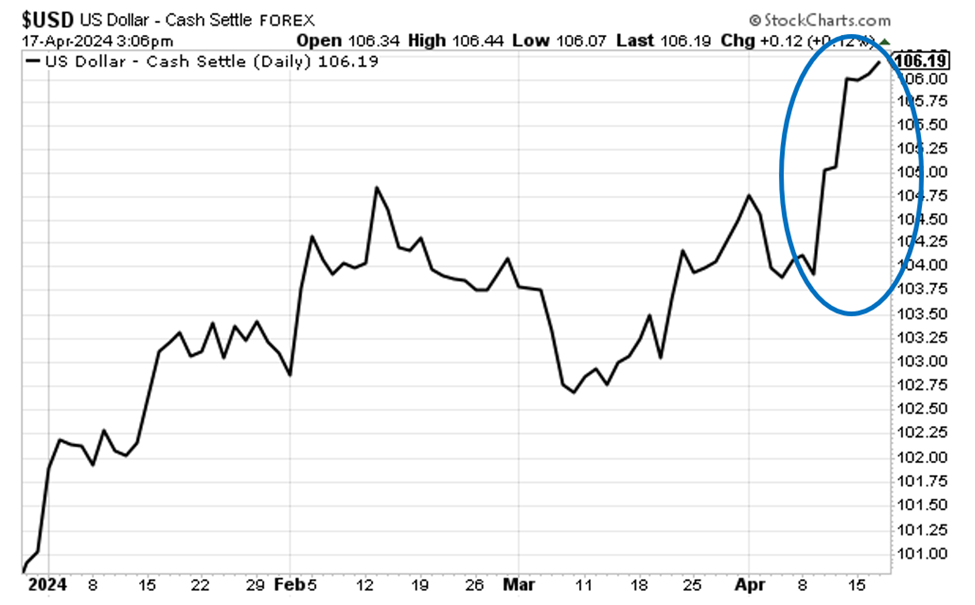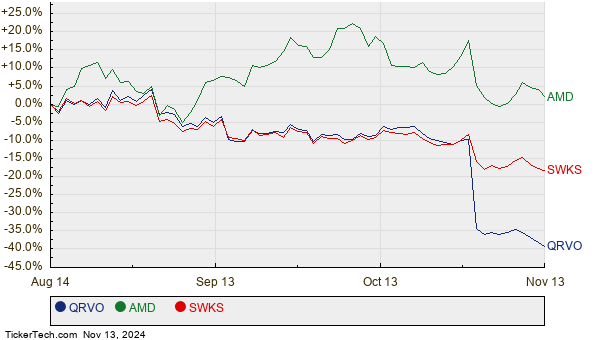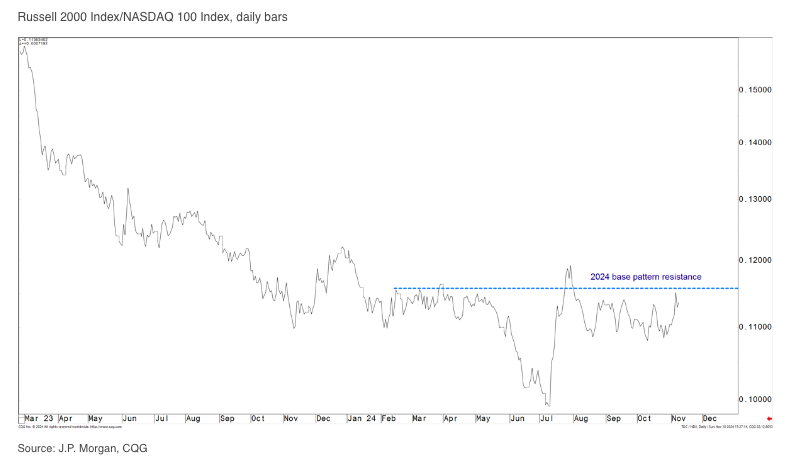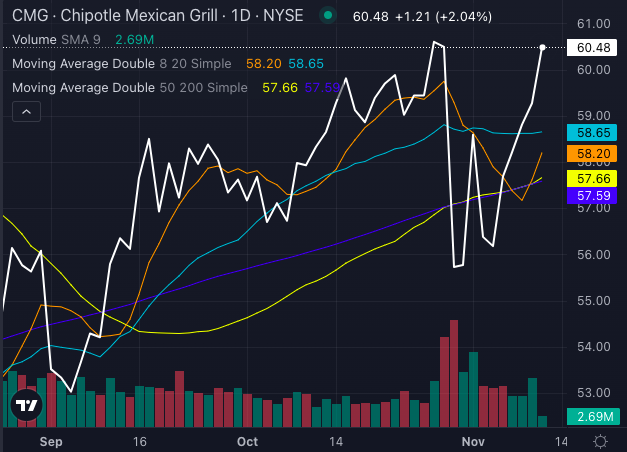Factors Driving the Dollar’s Surge: Implications for Investors
Embark on a whirlwind tour of unfolding stories impacting your investment portfolio today.
Prepare for a further strengthening of the U.S. dollar.
Reasons Behind the Dollar’s Upward Trajectory
The U.S. dollar has been on a steady ascent since late December, with recent days witnessing an exponential surge. The U.S. Dollar Index, a gauge of the dollar’s value against six major global currencies, including the euro and Japanese yen, has seen a significant spike in April.
Anticipate an even higher trajectory for the dollar. Renowned investor Louis Navellier points out that rising interest rates pose a challenge for Fed Chair Jerome Powell, making a consensus for an interest rate cut in June improbable. With the European Central Bank hinting at a rate cut in June, the U.S. dollar is expected to gain further strength due to its attractive interest rates, enticing investors to shift wealth from the euro to the dollar.
Implications of a Stronger Dollar on Portfolios
A robust U.S. dollar impacts multinational companies’ profits and raises commodity prices globally. When foreign purchases convert into fewer dollars due to a stronger dollar, it leads to diminished earnings for U.S. businesses. This dynamic affects nearly 40% of S&P 500 revenues generated internationally and around 60% for the tech sector. Investors holding multinationals should closely monitor this trend during earnings seasons.
A Return to Tariffs in the Headlines
The revival of tariffs, this time advocated by President Biden, echoes former President Trump’s trade policy. Biden’s call to triple the tariff rate on steel and aluminum imports from China signifies a commitment to address trade practices. Investors should track companies like Alcoa, Nucor, Cleveland-Cliffs, and ETFs such as PICK, as tariff strategies might impact inflation, similar to the repercussions seen under the previous administration.
Inflationary Trends in the Insurance Sector
While inflation garners attention, a less-publicized area experiencing steep price hikes is insurance. The surging cost of auto insurance, now constituting over a quarter of total vehicle expenses for some models, counters the overall decline in car prices post-pandemic. Amidst debates on tariffs’ inflationary impacts, insurance presents a notable sector with potential investment implications.
Untangling the Insurance Industry Challenges
The Surge in Insurance Costs: Unveiling the Factors
A year ago, the Labor Department reported that auto insurance costs surged by 22.2%, marking the most significant increase since the 1970s.
Contributing Factors:
- Increasing number of cars being totaled
- Quality issues from production disruptions during the pandemic
- Shortage of mechanics leading to longer repair times and higher costs for insurance companies
Insights for Investors
If you have investments in insurance companies, you’re likely seeing positive returns this year. The iShares U.S. Insurance ETF (IAK) remains up by 11% in 2024 despite experiencing a decline at the end of March.
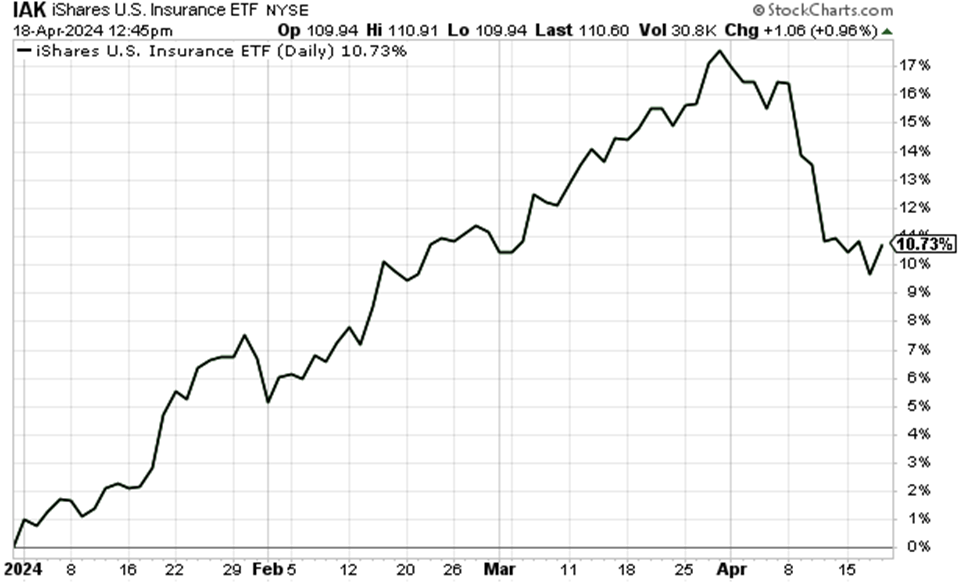
Source: StockCharts.com
Analyzing Underwriting Efficiency
When considering investments in insurance companies, it’s crucial to monitor the combined ratio as a measure of underwriting efficiency. A combined ratio of 100% indicates a break-even point for insurers. Ratios below 100% signify profitability, while figures above 100% suggest losses.
For instance, Farmers Insurance Group of Cos. has been struggling, with a net combined ratio surpassing 100% for nine of the last ten quarters.
Observations:
Zurich Insurance Group AG (ZURVY), the parent company of Farmers Insurance, has seen a decline of 1% while the IAK ETF remains positive.
Unraveling ‘Social Inflation’
Insurance premiums have been rising due to a phenomenon called “social inflation,” attributed to increased costly lawsuits fueled by legal abuse.
Industry leaders have pointed to an uptick in lawsuits, leading to higher settlement payouts, driven by emotional manipulation during trials.
Interestingly, hedge funds and private equity firms are increasingly financing major lawsuits, contributing to the expansion of the “litigation finance” sector.
Financial Trends:
Howard Shams, the CEO of Parabellum Capital, notes the growing popularity of litigation finance as an investment avenue with attractive returns.
The Cost of Rising Premiums
The rise in “nuclear” verdict payouts, financed by private equity and hedge funds, ultimately translates to higher premiums for policyholders. This trend paints a concerning picture for investors involved in the insurance sector.
Final Thoughts
From escalating insurance costs to mounting settlement payouts, the landscape of the insurance industry is undergoing significant shifts. Market adjustments are imminent as stakeholders navigate these challenges.
Wishing you a pleasant evening,
Jeff Remsburg

